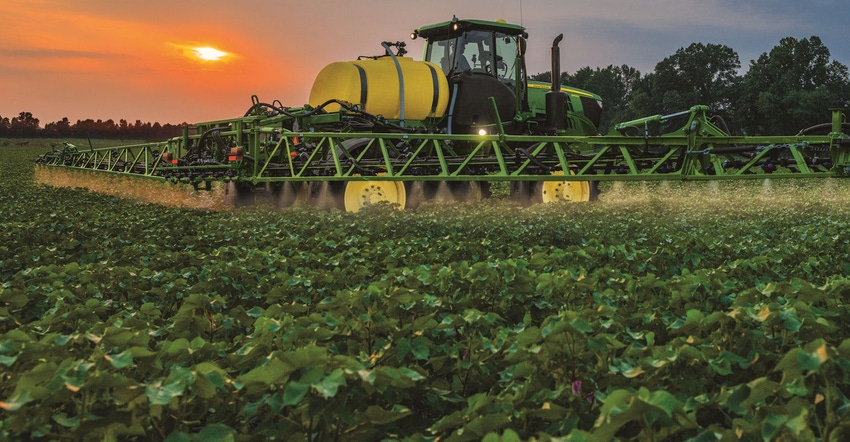April 5, 2017

The press wires lit up this week with news that ChemChina's $43 billion deal to buy Syngenta got approval from two key markets. The U.S. approval came through Tuesday, April 4 and the EU followed the next day. This follows word that the Dow/DuPont deal got conditional European Commission approval earlier in March and as part of that DuPont sold some key tech to FMC.
For Syngenta, both regional approvals come with stipulations that must be met for the deals to close. Here's a look at what we know about the stipulations by market area.
US pushes sale of key products
In review by the Federal Trade Commission it was found that there could be "significant competitive harm in the U.S." for three pesticides:
The herbicide paraquat, used for clearing fields prior to the growing season.
The insecticide abamectin, used primarily with citrus and tree nut crops to kill mites, psyllid and leafminers.
The fungicide chlorothalonil, used mainly in the potato and peanut markets.
Syngenta has branded products in each of those categories with significant market share in the U.S. ChemChina's subsidiary Adama happens to be first or second in market position for generic versions of these same products. As part of the U.S. deal ChemChina would sell all rights and assets of Adama's U.S. paraquat, abamectin and chlorothalonil businesses to California-based AMVAC.
This deal is part of a consent decree from the U.S. Federal Trade Commission and is key to approval of the ChemChina/Syngenta deal. The FTC consent decree is subject to public comment for 30 days beginning April 4. After that the commission will decide whether to make the proposed consent order final.
Competitive concerns differ in the EU
The European Commission looked at a range of issues as part of its approval of the deal including concerns regarding fungicides, herbicides, insecticides and seed treatment products. As part of those concerns ChemChina agreed to a wide range of commitments so the deal could go through, and the EC has agreed.
Those moves include the fact that ChemChina will divest a significant part of Adama's existing pesticide business including fungicides for cereals, fruits and oilseed rape; herbicides for cereals, corn, sunflower and vegetables; insecticides for cereals, corn, fruits, oilseed rape, and vegetables; and its seed treatment products for cereals and sugar beets.
Some of Syngenta's pesticides, "notably fungicides for vegetables; and herbicides for cereals, vegetables and sunflower would be sold," according to the commission. When queried by Farm Industry News, a Syngenta spokesman only noted that they could be no more specific about would be sold than what was listed by the European Commission, which was the vague statement about fungicides and herbicides.
In addition, 29 of Adama's generic pesticides under development and access to third parties to studies and field trials for the products would be sold.
A significant part of Adama's plant growth regulator business for cereals is to be divested.
And finally relevant intangible assets underpinning divested pesticide and plant growth regulator products would be sold; and the company would also make available relevant personnel.
While AMVAC is listed as the U.S. buyer for the assets listed in that agreement, no buyer was listed by the European Commission. How that shakes out remains to be seen. FMC made its deal with DuPont last week and its chair is on the record saying the company is not in the market for more spin-off products.
BASF is often rumored as a potential buyer of spin-off properties. It remains to be seen who snatches up the generic products that ChemChina is spinning off; and what products Syngenta will be forced to sell.
The ChemChina/Syngenta deal is expected to close the second quarter of 2017; and it appears to be on track.
Stay tuned.
About the Author(s)
You May Also Like






